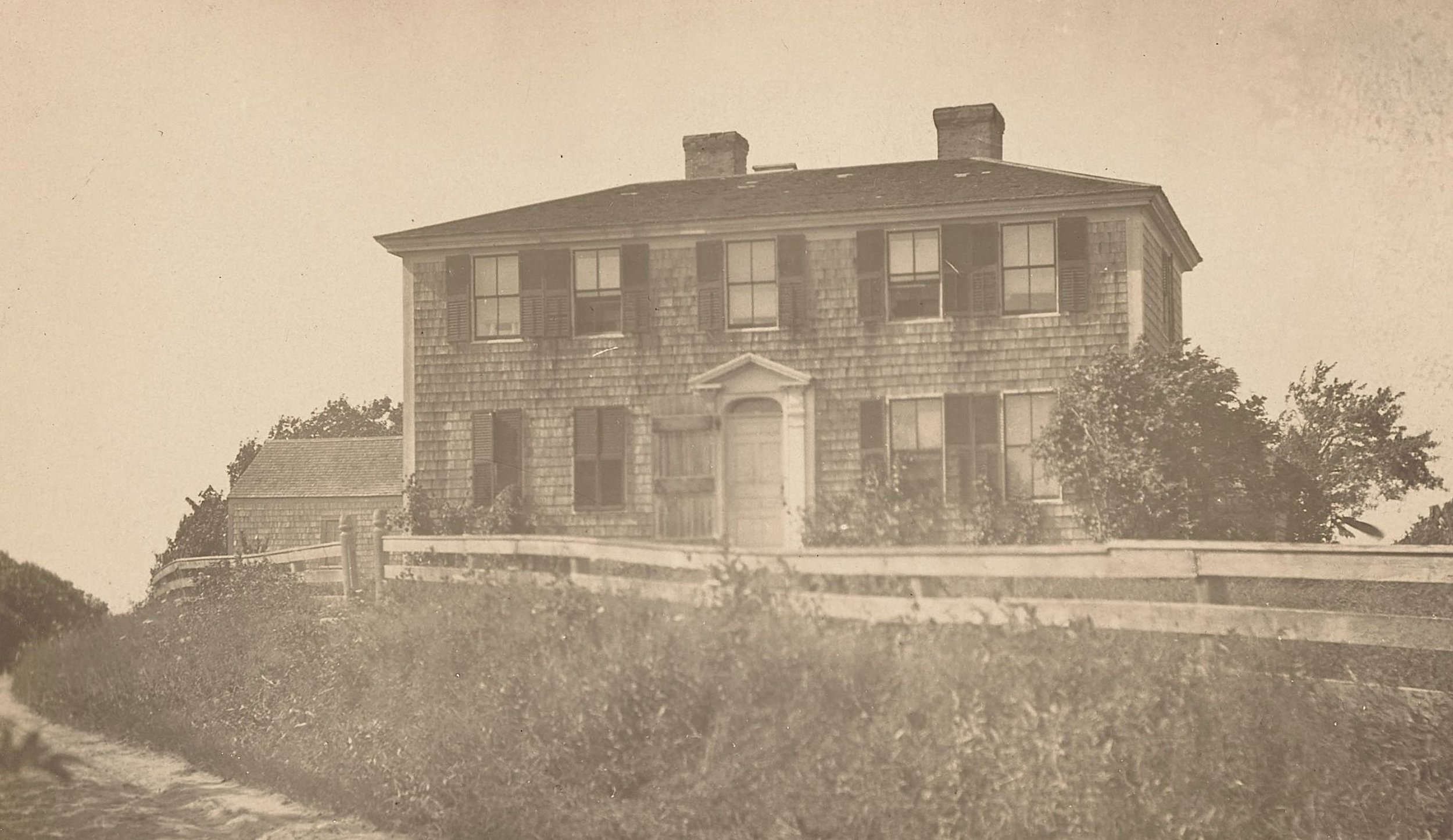Mill Lane, the oldest verified way in Yarmouth, began its existence in 1638 as an oxen path. It was the first settled part of the town of Yarmouth, extending east to Chase Garden marshes.
Mill Pond in the 1860s.
Long before the 1630s, when the first English settlers arrived in Yarmouth, many generations of indigenous peoples made their home here. The area was known to them as “Mattakeese.” They lived in simple structures called a wetu, domed dwellings made of bent red cedar saplings and covered with rush matting and bark with smoke holes and doorways [you can visit a wetu next to our Yarmouth Port Nature Trails]. Game was plentiful and was supplemented with shellfish and fish caught in traps and weirs. By 1640 Mattakeese had been renamed Yarmouth by the settlers after a seaside town in their native England.
Stephen Hopkins of the Mayflower was the first settler in the Mill Pond area. He was allowed to come here from Plymouth and take advantage of the salt marsh lands to feed the hay to his cattle.
At the end of 1642 Andrew Hallet purchased Stephen Hopkins’ house from Giles Hopkins, his son. It was located near the corner of what is now Mill Lane and Old King’s Highway and was a one room cabin made of hand-sawn boards, cracks daubed with clay, a thatched roof, a stone chimney and oiled paper windows. Within a few years he acquired some 300 more acres in the area.
Nathan Matthews on the bridge, next to the old mill, late 1800s.
The first mill, from which the pond and creek got its name, was mentioned in town records as early as 1647 - the tidal gristmill located on the left side of Mill Pond, owned and operated by Andrew Hallet. He later sold a portion of his land, along with the gristmill, to John Gorham who ran a tannery on the right hand side of the pond. The mill business was vital to the community and millers were exempt from military service.
48 Mill Lane
It is believed that Captain Ansel Hallet, born in Yarmouth in 1770, built the Federal style home at 48 Mill Lane shortly after his marriage to Anna Eldridge in 1798, though the house could be older. He was a pioneer in establishing the packet ship lines between Yarmouth and Boston. He died in 1832 when his ship Messenger, which had gone aground on a sand bar in Yarmouth Harbor, rolled over and crushed him. Captain Oliver Hallet later occupied this house. He was known for helping to plant in 1843, along with Amos Otis and Edward Thacher, the many elm trees that once lined OKH.
Yarmouth’s elm trees along Old King’s Highway.
The creek from Mill Pond was much wider and deeper then, with wharves that allowed vessels the size of brigs to load and unload their passengers and cargo. Yarmouth had several packets that sailed in and out with regular trips to Boston. However, when the railroad came through, the packet ships were unable to compete and ceased service in 1871.
A dam was built in 1889, at the cost of $61.50, to control the flow of the tidal waters. In 1898 the Portland Gale partially destroyed the bridge which was rebuilt. During a storm on Dec. 26, 1909, the tide washed over Mill Lane to a depth of 15 inches and broke completely over the railing of the bridge at Mill Pond. A portion of Thacher Shore Road was also submerged.
Carrie & Mary Park have their photo taken by the bridge in the late 1890s.
During the 1900s the Lovells, a fishing family from Barnstable, built a fishing shack/boat house along the creek next to the bridge.
Today Yarmouth residents enjoy fishing off the bridge, swimming in the creek and taking in the beautiful views. It is still a very appreciated part of Yarmouth Port.
Herbert Lovell’s fishing shack on Mill Creek.
Excerpted from an article by Pat Tafra.







